#eomonachus
Text


Relatively brief post because I imagine people won't care much about this one (nor is there that much to talk about). But newly described from the Pliocene of New Zealand we have Macronectes tinae, which we might as well call Tina's Giant Petrel.
Known from a really well preserved skull and a partial humerus, Tina's Giant Petrel is a species of giant petrel, but notably smaller and less robust than the modern species, like these ones.

There might be two reasons why its smaller. One is simple really. Giant petrels stand out amongst their relatives for being ridiculously big, while all their closest kin are pretty small. So logically, an older, more basal giant petrel is expected to be smaller. The authors also speculate that living in warmer waters is another factor, but modern petrel ranges are huge so that hypothesis is less solid.
Even if it was smaller, Tina's Giant Petrel still lived a life that was likely similar to its modern relatives. Meaning it was an absolute beast of a bird. Modern petrels are well known to scavenge near seal colonies and penguing colonies, mob other birds, steal and eat the chicks of other sea birds and also hunt for fish, squid and crustaceans. Google "giant petrel" and expect to be greeted by birds either absolutely tearing apart carcasses or being covered in blood. Petrels look pretty metal. As it so happens, Tina's Giant Petrel was found in a formation that is in no short supply of potential prey.
Eomonachus, a monk seal (illustrated by seal king Jaime Bran), Eudyptes atatu, a penguin (illustrated by Simone Giovanardi), Aldiomedes angustirostris, an albatross, various petrels and an undescribed species of pseudo-tooth bird (skull illustration by Jaime Headden) all would have given the extinct petrel a lot of options.


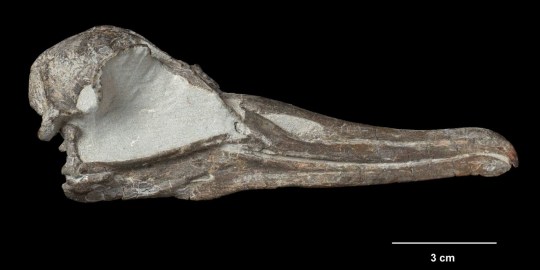
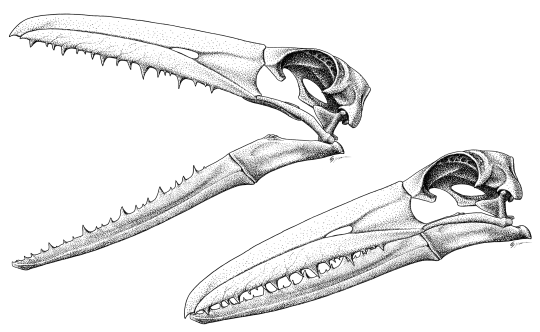
The paper also provides an illustration of the bird itself. Notably the artist, Simone Giovanardi who previously illustrated the penguins up above, decided to give this species darker plumage, reasoning that petrels in warmer waters tend to be darker than their relatives in the colder waters further south. The illustration shows it feeding on the carcass of a seal, probably the local Eomonachus.

Link to the paper: Taxonomy | Free Full-Text | A New Giant Petrel (Macronectes, Aves: Procellariidae) from the Pliocene of Taranaki, New Zealand (mdpi.com)
And obligatory link to Wikipedia: Macronectes tinae - Wikipedia
#giant petrel#paleontology#macronectes tinae#seabird#new zealand#palaeblr#technically dinosaur#bird#petrel#extinct bird#pliocene#Tangahoe Formation
55 notes
·
View notes
Text
Scientists thought these seals evolved in the north. 3-million-year-old fossils from New Zealand suggest otherwise
A fossil discovery in New Zealand has revealed a brand new species of monk seal that after referred to as Australasia house. We introduce the three million-year-old seal, Eomonachus belegaerensis, in a paper printed in the present day within the Proceedings of the Royal Society B.
Eomonachus is the primary monk seal species, dwelling or extinct, ever discovered within the southern hemisphere — and the oldest discovered wherever.
It’s rewriting all the pieces consultants thought they knew in regards to the evolution of “monachines”, a gaggle of seal relations comprising the 2 dwelling species of monk seal, the elephant seals, in addition to sure species of Antarctic seals.

We estimate Eomonachus belegaerensis was about 2.5 meters lengthy.
Jaime Bran/Museum of New Zealand Te Papa Tongarewa, Creator supplied (No reuse)
On the point of vanishing
Monk seals are among the world’s rarest and most endangered marine mammals. There are fewer than 2,100 Mediterranean and Hawaiian monk seals alive in the present day. The Caribbean monk seal was hunted to extinction by the Nineteen Fifties.
Conservationists are actually scrambling to avoid wasting what’s left of Earth’s final solely tropical seals from disappearing.
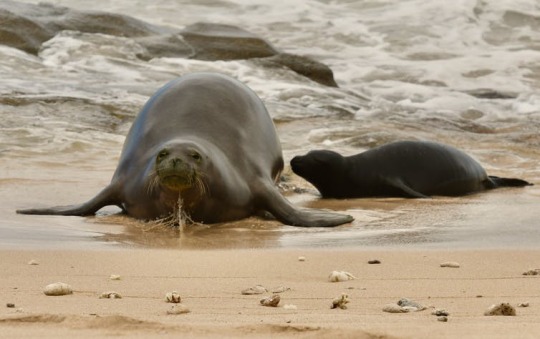
A Hawaiian monk seal emerges from the surf. That is an endangered species of earless seal (Phocidae household) that’s endemic to the Hawaiian Islands.
Robert Harcourt (Macquarie College)
That mentioned, we might be fallacious to imagine monk seals have been doing simply tremendous earlier than people started exploiting them. How they fared over the previous few million years stays unclear. We additionally don’t know the place they originated, as fossils are few and much between.
Scientists historically thought all monk seals developed within the North Atlantic Ocean. Earlier than the invention of Eomonachus, monk seals had solely been discovered within the Northern Hemisphere.
Actually, most monachine fossils are discovered within the north, despite the fact that a number of dwelling monachines (Antarctic seals and elephant seals) reside almost exclusively within the Southern Ocean.
The surprising discovery of Eomonachus has fully flipped the evolutionary historical past not solely of monk seals, however of all monachines — by inserting all three within the Southern Hemisphere for the primary time.
Learn extra:
Marine species are more threatened than we thought – and we’ve only looked at 3%
A monk seal from New Zealand
The restoration of the primary identified Eomonachus fossils got here within the type of seven skulls uncovered alongside the coast of Taranaki, on New Zealand’s North Island. The fossils have been retrieved by native collectors and donated to the Te Papa Tongarewa and Canterbury museums.
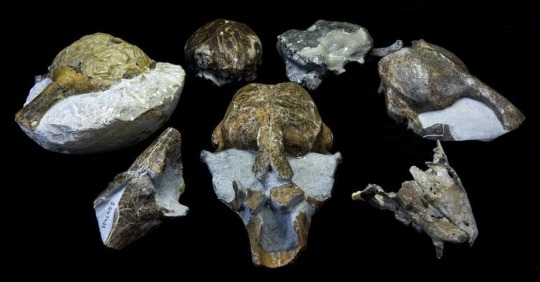
The seven fossilised skulls of the extinct monk seal species Eomonachus.
Erich Fitzgerald (Museums Victoria)
Our group finally named the species Eomonachus belegaerensis. This interprets to “daybreak monk seal from Belegaer”. Belegaer is the fictional sea that lies west of “Center Earth”, the land from J. R. R. Tolkein’s Lord of The Rings trilogy which is commonly related to New Zealand.
However what have been monk seals doing in New Zealand three million years in the past?
Nicely, up to now, southern oceans have been lots hotter than they’re in the present day. And historic monk seals, very similar to their fashionable relations, lived in subtropical waters.
However till this year, few scientific research on extinct monachines had been performed within the southern hemisphere. That is doubtless why Eomonachus eluded scientists for therefore lengthy.
Learn extra:
In a land of ancient giants, these small oddball seals once called Australia home
The evolution of monachines
Following the disclosing of Eomonachus, we determined to re-investigate the evolution of the monachines.
Our analysis signifies this group of seals developed within the Southern Hemisphere in any case. That is in distinction with each idea beforehand put ahead by scientists.
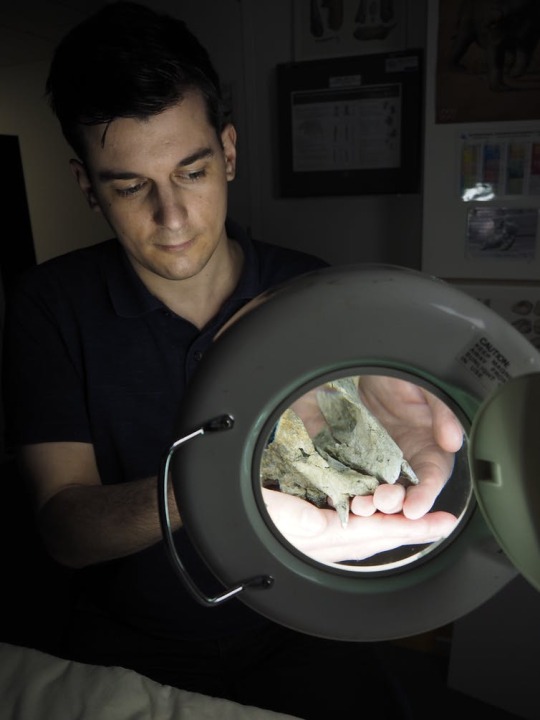
Monash College palaeontologist James Rule with one of many Eomonachus cranium fossils present in New Zealand.
Erich Fitzgerald/Museums Victoria
If there’s certainly a southern origin for monachines, this could imply the group crossed the equator a minimum of eight instances all through its evolutionary historical past.
Nonetheless, the nice and cozy waters on the equator are broadly accepted to be a thermal barrier which is troublesome for marine mammals to cross.
If previous monachines did soar between each hemispheres, they might have had broad environmental tolerances that allow them do that. And this could have enabled their dispersal all over the world.
It’s troublesome to say conclusively whether or not fashionable seals share this trait, however we do comprehend it’s uncommon for them to cross the equator throughout their lifetime.
Local weather change and seal extinction
So why aren’t monk seals dwelling round New Zealand now?
About 2.5 million years in the past, marine megafauna skilled an extinction event, thought to have been brought on by a drop in sea ranges because of falling international temperature.
Earlier analysis has theorised this alteration in local weather spurred the extinction of many ancient seals within the Southern Hemisphere. This might have included Eomonachus, in addition to different extinct monachines.
This implies the world’s final two species of monk seal, vestiges of what was as soon as doubtless a widespread group, are additionally in danger from local weather change.
If sea ranges proceed to rise, the seashores monk seals rely on for resting and breeding might disappear. Rising temperatures might additionally disrupt food webs, making it troublesome for them to seek out meals.
Whereas the invention of Eomonachus is thrilling, it may also be thought of a cautionary story.
Source link
from Diaspora9ja https://diaspora9ja.com/scientists-thought-these-seals-evolved-in-the-north-3-million-year-old-fossils-from-new-zealand-suggest-otherwise/?utm_source=rss&utm_medium=rss&utm_campaign=scientists-thought-these-seals-evolved-in-the-north-3-million-year-old-fossils-from-new-zealand-suggest-otherwise
0 notes